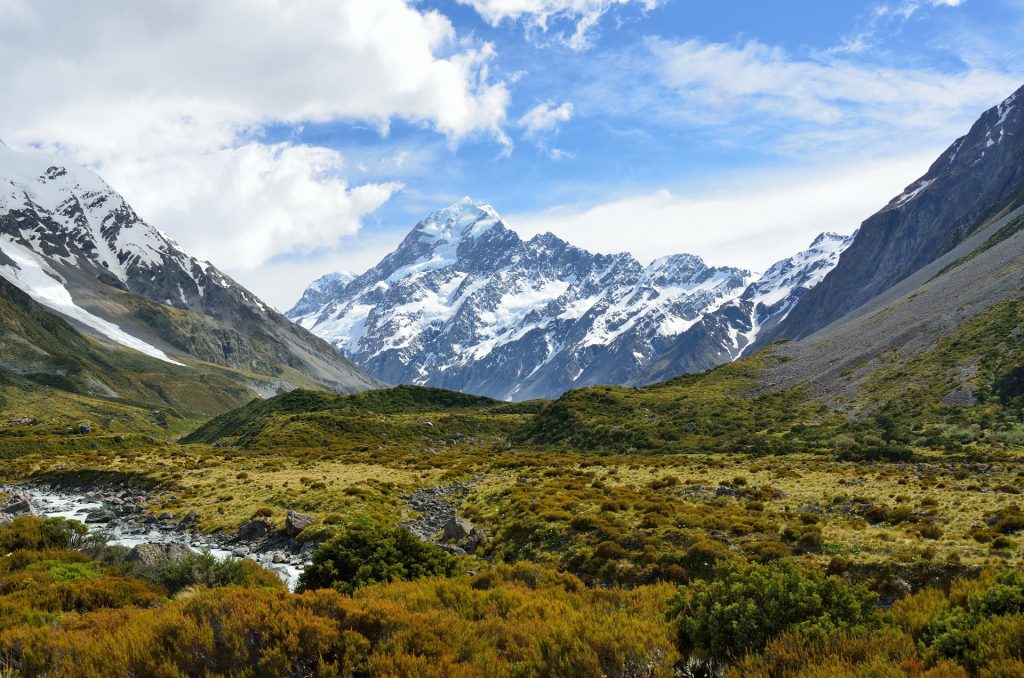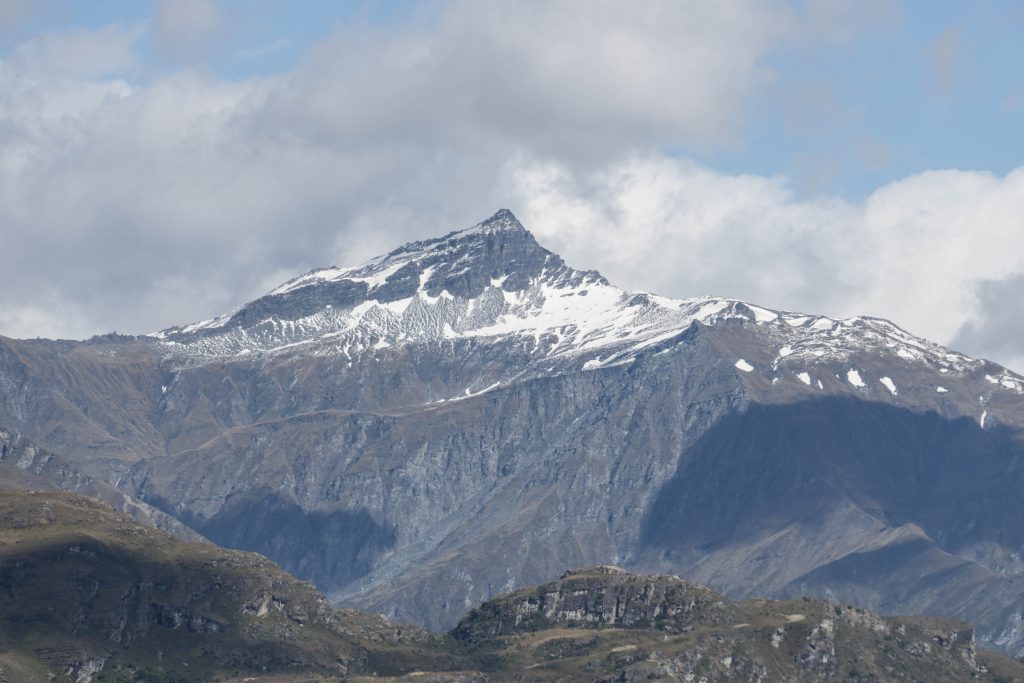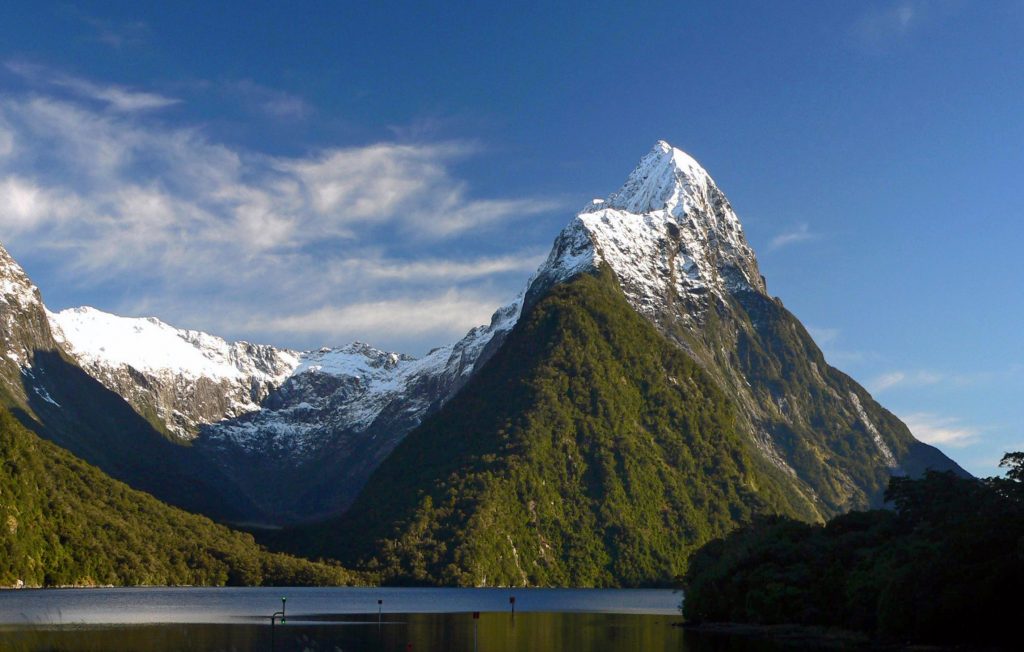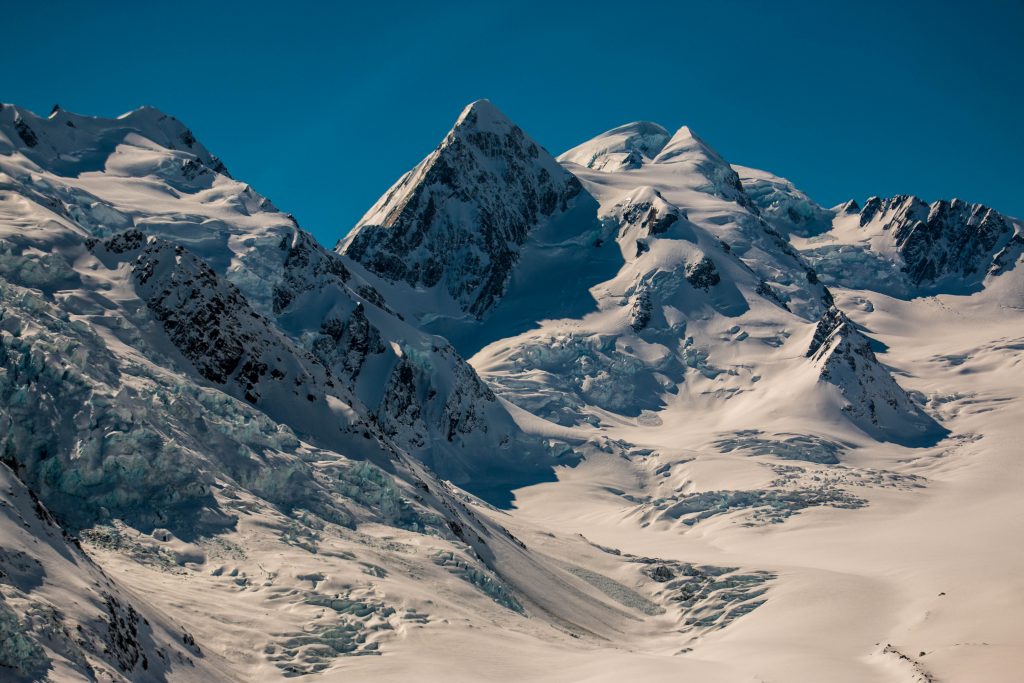11 Mountains Perfect for New Zealand Adventures

Nowhere in this world has more beautiful mountains than New Zealand. If you’re looking for a place surrounded by breathtaking backdrops and idyllic attractions that makes your jaw drop in awe, then New Zealand is the place to be. The beautiful mountains of New Zealand have wondrous peaks soaring up high into the sky and majestic mountains that will inspire you to be a climber.
On the 11th of December 2003, the world celebrated the first International Mountain Day, to help create awareness and pay tributes to the incredible natural formations that have always inspired us to reach the peak. Also, some of the mountains of New Zealand have played starring roles in blockbuster movies, and some others have stood guard and still stand guard over some of the most spectacular scenery in the world.
Here are our ten top mountains of New Zealand. Enjoy and happy hiking!
1.
Mount Taranaki

Image by Travelbusy on flickr
Mount Taranaki, also known as Mount Egmont, is one mountain that is impossible to miss; it is a quiescent stratovolcano. Standing in the Taranaki region of the North Island with a majestic height of 2,518 meters (8,261 feet), Mount Taranaki is the crown prince of the Taranaki skyline, with one of the most symmetrical volcanic cones in the world.
To circumnavigate the mountain, you can go through the Pouakai Crossing, which will take you through the Egmont National Park. You can visit Egmont National Park if they want to visit this mountain. Here, mallet mountain climbing facilities are also provided by clubs for those people who have the capacity and experience to climb Mount Taranaki. Also, there is a ski field present on the eastern slope of this mountain for those who love skiing.
Also, bearing close semblance to Mount Fuji of Japan, Mount Taranaki has starred in the blockbuster movie of Tom Cruise “The Last Samurai.” You really can’t miss this mountain.
2.
Malte Brun Mountain

Image by WikiCommons
Malte Brun Mountain, named by Julius von Haast after the French geography Victor Adolphe Malte-Brun, is the highest peak in the Malte Brun Range. It is situated between the Tasman and Murchison Glaciers will the Southern Alps of New Zealand.
Rising to a height of 3,199 meters (10,495 feet), it is the third highest mountain in New Zealand. However, it is not a climbing feat for beginners. Various climbing routes lie on this mountain, but all require technical experience and technical equipment.
Also, the most popular way to climb this mountain is through the West Ridge which includes the Cheval; a knife-edge ridge that is traversed by straddling. Some other major climbing routes that run through the Malte Brun Mountain are the South Ridge and the South Face.
You might be privileged to see two climbers servicing huts that used to exist on the lower slopes; The Beetham hut in the Beetham Valley that was destroyed by an Avalanche in the early 1990s, and the Malte Brun Hut on moraine terraces just above the Tasman Glaciers.
3.
Aoraki / Mount Cook

Image by kewl from Pixabay
The snow-capped Aoraki also is known as Mount Cook in the South Island’s rugged Southern Alps is New Zealand’s highest peak, standing at 3,724 meters (12,218 feet). Regarded as the most dangerous mountain present in New Zealand, it has always posed a challenge to climbers, and for this reason, there is still a quest to conquer the mountain. Aoraki, Mount Cook, is a part of the Aoraki/Mount Cook National Park. Only the bravest of hearts try to climb the hill, but others can enjoy its view while visiting the National Park.
For those that are not ready to climb this daunting mountain, the best way to get up close to the peak is to ride with the Air Safaris, which flies from nearby Tekapo, Glentanner, and Franz Josef.
Mount Cook is four hours drive away from Christchurch and in the middle of the International Dark Sky Reserve, which is known for having the clearest night skies in the world. Aoraki overlooks the Lake Pukaki in the Mackenzie Basin which is a part of the Canterbury Region. It is also made up of three distinct summits that neighbor the Hooker Glacier to the southwest and the Tasman Glacier to the east.
If you are the bravest of hearts, then this mountain is your platform to greatness.
4.
Mount Tasman

Image by Wiki Commons
Located in the Southern Alps of New Zealand, Mount Tasman is New Zealand’s second-highest mountain, rising to and standing at a remarkable and respectable height of 3,497 meters (11,473 feet). Not only is its height quite decent, but its location is also quite interesting. Mount Tasman sits on the Main Divide of South Island, which is the politically established boundary separating the West Coast regions and the Canterbury.
However, not only is it the second largest mountain in New Zealand, but it is also the second most favorite among the avid climbers. There are various expeditions organized to climb the hill. So if you’re interested in them, feel free to join!
Also, Mount Tasman sits between the Aoraki/ Mount Cook National Park and Westland Tai Poutini National Park, so once you get to the top, you will be able to view the magnificent Mount Cook. Two sights for the climb of one.
5.
Mount Ruapehu

Image by katarina_dzurekova on flickr
At the end of the Taupo Volcanic landscape is another stratovolcano called the Mount Ruapehu. It is the largest active volcano currently present in New Zealand.
Mount Ruapehu contains three major peaks that look spectacular when covered in snow; major ski resorts are always on the ground across the glaciers. Standing at an elevation of 2,797 meters, Mount Ruapehu has a deep and active crater embedded in it. Also, from the peak of the hole, you can see the Whakapapa in the north and the Turoa in the south.
6.
Mount Ngauruhoe

Image by russellstreet on flickr
Central to one of the mysteries of New Zealand, Mount Ngauruhoe is considered one of the most active volcanoes present in the world. It is a mountain made from layers of tetra and lava. Also, it’s the secondary cone of Mount Tongariro and is located in the central plateau of the North Island.
The elevation of this mountain is 2,291 meters. The Mangatepopo track is used to climb the mountain from its western side. Most climbers can climb this mountain quite easily. Proper gears should be used because of the sulfurous gases that emit from the crater.
Mount Ngauruhoe is the youngest volcanic vent among the Tongariro volcanic complex, first erupting some 2,500 years ago. It is surrounded by Mount Tongariro to the north, Mount Ruapehu to the south and the Rangipo Desert to the west. Ngauruhoe has erupted 45 times in the 20th Century, the most recent being in 1974.
7.
Mount Aspiring / Tititea

Image by itravelNZ on flickr
For all those who aspire this mountain is for you. Sitting just outside of the Aoraki / Mount Cook region, Mount Aspiring aspires a whopping 3,033 meters (9,951 feet) and is the highest mountain outside of the Mount Cook Region. Mount Aspiring / Tititea is translated in the native language to mean ‘Glistening Peak.’ The hill also lies near three major glacial systems. These systems are the Bonar Glacier, and the Therma Glaciers.
The best access to Mountain Aspiring National Park for climbers is via West Matukituki Valley. It is located 50 kilometers (31.1 miles) from the national park’s nearest town, Wanaka; a small lakeside resort town that is an hour from Queenstown in the South Island.
There are different huts that form the staging points for these climbers. However, you must have experience in climbing if you want to overcome this peak. For those without climbing experience, you can visit the national park to see the spectacular views or fly with Aspiring Helicopters. The Aspiring Helicopters are there to give you a scenic flight. They will not only show off the mountain but the fantastic and beautiful scenery of New Zealand.
8.
Mitre Peak

Image by Bernard Spragg. NZ on flickr
Mitre Peak towers over the tranquil waters of the famous Milford Sound. It takes its name from its distinctive peak shape that resembles a Christian Bishop’s miter. Mitre Peak towers at the height of 1,690 meters (5,560 feet) and is a tough mountain to climb.
Mitre Peak is probably one of the most iconic South Island mountains, and the best way to see this nature’s peak is from the boat cruises. Also, there are many boat cruises for visitors to Milford Sound to choose from and they all offer fantastic views of the iconic peak. However, you will need to access the Milford Sound via State Highway 94.
An extra tip: If you are visiting Milford Sound, you will also get a good view of the mountain.
9.
Mount Sefton (Takiroa)

Image by travelwayoflife on flickr
Mount Sefton measures 3151 meters (10,338 feet). It towers high above the Mount Cook Village and is one of New Zealand’s premier wilderness climbs. An interesting fact about his mountain, however, is that according to Maori legend Takiroa is the guardian of Aoraki.
Mount Sefton is best climbed from the West Coast. The following routes can also help you out, they’ve been tested and attested by the New Zealand travel authorities. Some of these routes include the Frind Route, East Ridge, and West Ridge.
The Frind Route
This route starts from Frind Glacier and heads up a gully onto a rock rib north of the Ngaroimata Falls to the Donne Glacier. From there, the route ascends northwards under Sharks Teeth to reach Brunner Col. However, travelers need to be cautioned for they will be exposed and avalanche-prone slopes.
East Ridge
The East Ridge runs from Sefton Bivvy to the Summit Ridge in the middle of the mountain. However, in this route, there are crevasses that may give travelers trouble. The rocks are appallingly loose in the lower sections but the route does improve towards the top.
West Ridge (2+)
West Ridge of Mount Sefton from the Douglas Névé is a relatively straight forward 500m climb and is commonly used as a descent route. There are many photo-worthy views along the route. For example, you can surmount the waterfall on the western side by using vegetated ledges. Also beyond the bush line, there are cairn-marked bivvy rocks and a stream that leads onto the ridge. Also, this route separates the Scott and Tekano Glaciers.
10.
Mount Elie De Beaumont

Image by osé Rambaud on flickr
Mount Elie De Beaumont is a classic ski tour at the head of the Tasman Glacier. It is named after Jean-Baptiste Élie de Beaumon; a French Geologist and miner. It offers quality fall line skiing from a 3000m, heavily glaciated peak, right on the main divide of the Southern Alps.
Also, Elie de Beaumont is usually skied as part of a more extensive tour in the upper Tasman Gl neve, with a base out of either Tasman Saddle hut or Kelman Hut. More commonly the route taken nowadays is up to the real right of the Anna Glacier to the Walter/Elie col.
11.
Mountain Maungawhau

Image by Wikicommons
Maungawhau, also known as Mount Eden is a dormant volcano. It stretches 196 meters (643 ft) high above sea level. This bowl-like crater is 50 meters (160 ft) deep. ALso, it was created from three craters that erupted 28,000 years ago. The peak, which goes by both its Māori and English names, is the highest point in the city, making it a popular destination for tourists.
New Zealand is well-known for its mountains, volcanoes and national parks. Why don’t you pay a visit?

